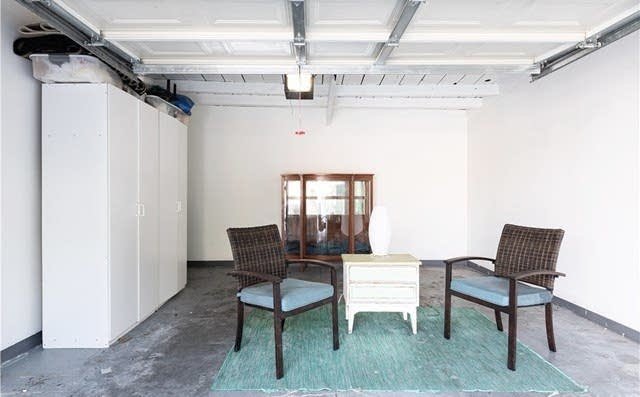Every Angelino knows that the city is experiencing a housing crisis with seemingly no end in sight. The opinions vary on who’s at fault and what can be done to fix it. But either way, home buyers and renters can agree that something has to change.
Luckily, in 2019, California lawmakers passed new legislation regarding additional dwelling units (ADU’s) that could help alleviate the affordable housing shortage.
Keep reading to learn more about ADU’s, the new rules that took effect in 2020, and what it means for Los Angeles.
What are Additional Dwelling Units or ADU’s?
If you’ve never heard the term ADU, you’re probably familiar with one of its colloquial names: in-law suite, granny flat, guest house, backyard bungalow…
They all describe the same thing--an additional unit that sits on the same lot as a main residence. The unit can be attached or detached to the home, converted from an original structure like a garage, or built from scratch. Either way, the unit has to be equipped with full amenities that are separate from the main house.
Simply providing a finished living room with a pull-out couch and microwave for heating up a jar of queso won’t cut it. That’s a glorified man-cave. An ADU needs its own bathroom, a functional kitchen, sleeping area, and storage.
Though an ADU sits on private property, the homeowner can’t build or convert a structure at their leisure. They have to adhere to the necessary building requirements and obtain construction permits.

This garage has great ADU potential
California ADU Laws Prior to 2020
Up until 2016, California ADU laws were pretty strict. So much so, that Los Angelinos were only submitting 200-300 ADU building permit applications per year.
After those rules were loosened up, the number of permit applications sky-rocketed to 3,818 in 2017.
Despite these changes, there were still plenty of legal hoops to jump through before you could build an ADU. Plus, individual cities were found to not be complying with some of the guidelines that California had decided should be the law of the land.
As the housing crisis grew worse, California lawmakers realized that they needed to further reform their ADU permit policies.
Changes That Went into Effect After January 1st
On October 9th, 2019, Governor Gavin Newsom signed the new ADU bill, AB-881, into law which took effect on January 1st. There are plenty of new details to learn, but some major and exciting changes include:
-
California Building Codes Override Local Ordinances. Cities and neighborhoods have to comply with California laws. Even HOA’s can’t stop you from building ADU’s on your property. Also, deeds mandating against ADU’s are now considered null.
-
Parking Space Minimums Have Been Relaxed. Previously, ADU’s had to provide parking spaces on the property for tenants. That’s a huge deterrent for people looking to build ADU’s because some lots simply don’t have that extra space available. Now, if the ADU is within .5 miles of public transportation (which includes bus stops) and/or if there’s residential street parking, the owner doesn't have to provide a parking spot.
-
There’s No Minimum Lot Size. Now, if there’s enough room for a new structure or if you have a garage, you can build or convert it. You don’t have to worry about any arbitrary lot size minimums.
-
Structure Height Can Reach Up to 16 Feet. This is true even if it obstructs the view of another home. Your neighbors might not love it, but it makes building an ADU much easier.
-
Owners No Longer Have to Live on the Property to Rent Out Their ADU. This creates more housing now that an owner can rent out both the main house and the ADU.
-
You Can Convert an Existing Structure AND Build a New Structure. Before AB-881, homeowners could only have one ADU on the property. The new law allows for one ADU and one smaller, “junior ADU” per property. If you’re not living on the property, that’s three different residences you can rent out.
-
Local Government Must Review an ADU Application within 60 Days. That means not waiting as long to get to work on building new housing.
These new mandates will make it much easier for homeowners to start building ADU’s, creating additional revenue streams for themselves. But what will it do for the Los Angeles housing crisis?
How More ADU’s Can Alleviate the Los Angeles Housing Crisis
When it comes to constantly soaring Los Angeles rent prices, there’s no magic solution. Or at least, no one can agree on one solution.
While lawmakers try to figure out bigger, more sweeping legislation, smaller measures like relaxed ADU rules can help in the meantime. Making it easier for homeowners to build ADU’s will hopefully mean that in the near future there will be more housing available.
Plus, now that you can build two ADU’s on one property, triplexes--which are considered multi-family homes--are now legal in most cases. That’s big news because between half and three quarters of developable land in California is zoned for single-family residences. Think of all that land that can be used for additional housing that was never available before!
It won’t be apparent for a while whether or not these new laws have a large impact on the housing crisis. After all, homeowners still have to get their permits and complete construction. For now, we can only hope that the changes have motivated a lot of people to start building.
Are You Looking to Buy a Property with ADU Potential?
Building an ADU (or two!) not only helps your community, it can also provide you with a new revenue stream. If you’re thinking of buying a new home, consider looking for a property with ADU potential.
Want to start looking for a new home? Let us help you with your search. Call us at 310-874-1278 or email bnicolas@ietrealestate.com.
Posted by Ben Nicolas on
Leave A Comment